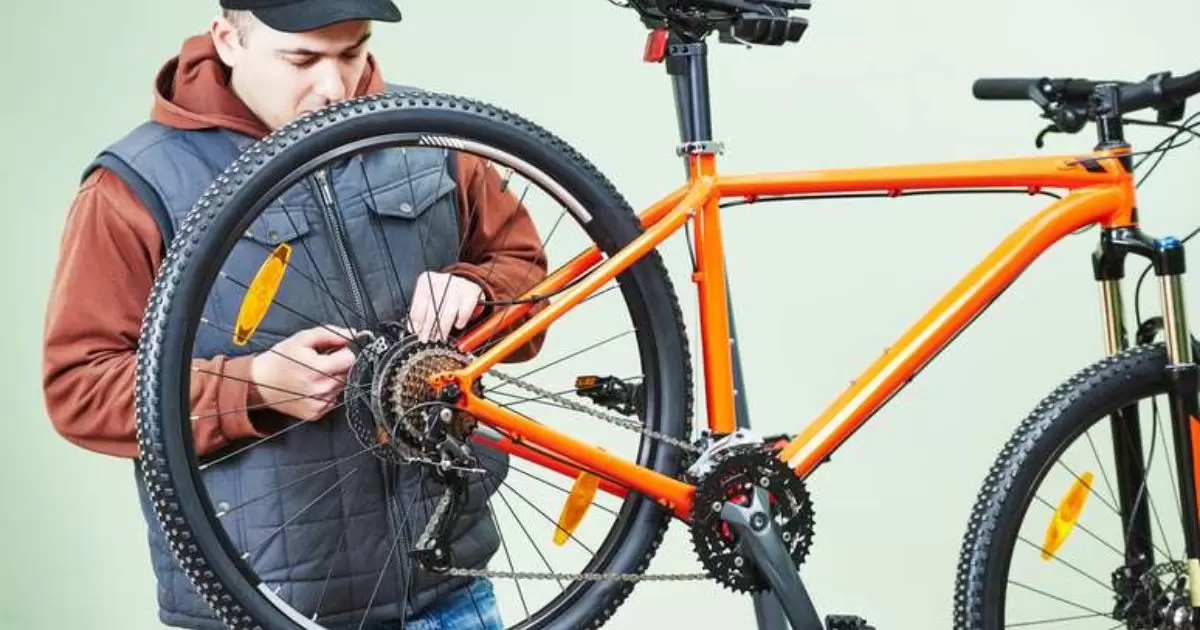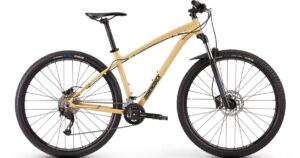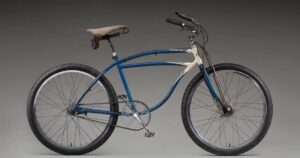Adjusting gears on a mountain bike involves fine-tuning the mechanisms that control chain movement between different-sized sprockets or gears. Riders tweak these settings to ensure smooth shifting, facilitating comfortable pedaling on various terrains. It’s about finding the right balance between gear ratios to optimize performance and make riding uphill, downhill, or on flat surfaces more efficient.
Ready to master the trails? Discover the secrets of a smooth ride by learning, “How do you adjust gears on a mountain bike?” Unravel the mystery behind seamless gear changes, unlocking the power to conquer any terrain with ease. Take the first step towards a more exhilarating biking experience—dive into the world of gear adjustment and revolutionize your ride
Adjusting gears on a mountain bike involves tweaking the derailleur and cable tension to ensure precise shifting. Start by identifying the problem area whether it’s chain skipping or difficulty in shifting. Then, fine-tune the barrel adjuster and limit screws on the derailleur to achieve smooth gear changes, making uphill climbs and downhill descents a breeze.
Understanding the Components
Understanding the components of mountain bikes involves familiarizing yourself with key parts like the frame, suspension, gears, brakes, and tires. Each component plays a crucial role in handling different terrains, from rugged trails to smooth descents. Knowing how these elements work together empowers riders to optimize their bike for specific riding styles and adventures, ensuring a safer and more enjoyable experience on the mountainside.
Signs Your Gears Need Adjustment
When your mountain bike’s gears need adjustment, they often send clear signals. Keep an eye out for signs such as clunky gear changes, chain skipping or dropping, or difficulty in finding the right gear for the terrain. These symptoms suggest it might be time to fine-tune your bike’s gear mechanisms for smoother rides and better performance.
If you notice excessive noise during gear shifts, persistent chain slippage, or a delay in gears engaging, these are indicators that adjustments are necessary. Regularly checking for these signs ensures that your mountain bike operates at its best, offering you a seamless and enjoyable riding experience on diverse trails.
Tools Required for Gear Adjustment
Gear adjustment on mountain bikes requires a few essential tools to ensure precise tweaks and fine-tuning. Hex keys come in handy for adjusting derailleur limit screws and cable tension, allowing for accurate modifications to the gear shifting mechanism. Screwdrivers, particularly Phillips and flathead types, are vital for accessing and adjusting the components within the derailleur system, ensuring smooth gear changes.
A cable tension adjuster proves invaluable for making minute adjustments to the tension in the bike’s cables, enabling riders to optimize gear shifting performance. These tools, though simple, play a crucial role in maintaining and adjusting the gears on a mountain bike, empowering riders to tailor their bike’s performance to suit diverse terrains and riding preferences.
Preparing Your Bike for Gear Adjustment
Before diving into change gears on a mountain bike adjustments, it’s crucial to prep your ride. Start by giving your bike a thorough check—inspect the chain, cables, and derailleurs for any signs of wear or damage. Cleaning the drivetrain ensures a smooth and accurate adjustment process, so grab a brush and degreaser to spruce it up.
Next, gather the necessary tools—a set of hex keys, screwdrivers, and a cable tension adjuster will come in handy. Having these at the ready ensures you’re well-equipped to tackle any adjustments needed. Lastly, find a well-lit, spacious area where you can work comfortably and efficiently. With your bike in top condition and tools in hand, you’re all set to embark on the journey of fine-tuning and optimizing your mountain bike’s gear performance.
Step-by-Step Guide to Adjusting Gears
Here are five benefits of following a step-by-step guide to adjusting gears:
- Precision: A structured guide ensures precise adjustments, minimizing guesswork and enhancing gear performance for a smoother ride.
- Efficiency: Following steps sequentially saves time and effort, allowing you to quickly identify and rectify gear issues without unnecessary trial and error.
- Improved Riding Experience: Properly adjusted gears result in seamless shifting, enhancing overall biking comfort and enjoyment on various terrains.
- Longevity of Components: Accurate adjustments reduce wear and tear on the drivetrain components, potentially prolonging the lifespan of your bike’s gears.
- Empowerment: Learning a step-by-step process equips you with the knowledge and skills to confidently maintain and fine-tune your bike’s gears, fostering a deeper connection with your ride.
Troubleshooting Common Gear Adjustment Issues
Troubleshooting common gear adjustment issues on mountain bikes involves identifying and addressing recurring problems riders often encounter. Issues like chain skipping, gears not shifting smoothly, or chain rubbing against the derailleur can disrupt a seamless ride. By checking cable tension, derailleur alignment, and limit screws, riders can diagnose and resolve these issues, ensuring smoother gear changes and an overall improved biking experience.
Understanding these troubleshooting steps empowers riders to take charge of their bike’s performance. Regular maintenance, such as cleaning the drivetrain and ensuring proper lubrication, further prevents common gear adjustment issues, allowing bikers to enjoy uninterrupted adventures on any trail they tackle.
Maintaining a Consistent Shifting Experience

Maintaining a consistent shifting experience on mountain bikes involves regular upkeep of the gears, cables, and derailleurs. It’s about keeping these components clean and well-lubricated to ensure smooth transitions between gears, enhancing the overall riding performance. Consistent maintenance not only preserves the bike’s functionality but also provides a more enjoyable and efficient experience on various terrains.
Upgrading Your Mountain Bike Gearing
Upgrading your mountain bike gearing involves enhancing the bike’s gear range or components for improved performance. Whether it’s swapping out the cassette, chainrings, or derailleur, these changes can optimize gear ratios for smoother climbs or faster descents. It’s about customizing your bike to match your riding style and the terrain you tackle, elevating your biking experience to new heights.
Tips for Riding with Properly Adjusted Gears
Riding with properly adjusted gears on a mountain bike can significantly enhance your biking experience. First and foremost, ensure your gears are finely tuned before hitting the trails. Smooth gear shifts enable seamless transitions between terrains, allowing for more efficient pedaling uphill and greater control downhill. Properly adjusted gears also reduce the strain on your bike’s components, prolonging their lifespan and minimizing the risk of unexpected malfunctions during rides.
To maximize the benefits of well-adjusted gears, pay attention to your riding technique. Anticipate shifts in terrain and adjust gears preemptively to maintain a steady cadence. Additionally, familiarize yourself with the gear range to optimize performance—lower gears for climbs and higher gears for flats or descents. Riding with properly adjusted gears isn’t just about the bike; it’s about syncing your skills with the bike’s mechanics for a smoother, more enjoyable ride through diverse landscapes.
Gearing for Specific Riding Conditions
Here’s a simple table showcasing gearing recommendations for specific riding conditions on mountain bikes:
| Riding Condition | Recommended Gearing |
| Uphill Climbs | Lower gears (larger rear cogs) |
| Downhill Descents | Higher gears (smaller rear cogs) |
| Flat Surfaces | Mid-range gears for efficiency |
| Technical Trails | Varied gears for quick shifts |
| Steep Inclines/Declines | Adjust gears based on terrain |
This table outlines the general recommendations for gearing based on different riding conditions encountered while mountain biking. Adjusting gears accordingly can optimize your pedaling efficiency and overall performance across varied terrains.
Adapting to Changing Weather Conditions
Mountain biking requires adapting to changing weather conditions for a safe and enjoyable ride. Riders often face unpredictable elements like sudden rain, shifting temperatures, or varying terrain. Adapting means dressing in layers, carrying essential gear like waterproof jackets, and adjusting tire pressure to navigate different surfaces efficiently.
Being prepared for weather fluctuations is crucial in mountain biking. It involves staying informed about the forecast, packing essentials like spare clothes and tools, and adjusting riding techniques to accommodate wet or slippery trails. Adapting to changing weather conditions not only ensures a smoother ride but also enhances the overall biking experience by enabling riders to tackle diverse terrains with confidence and ease.
Frequently Asked Question
How do I know if my gears need adjustment?
Signs like chain skipping, difficulty in shifting, or noisy gear changes indicate that adjustments might be necessary.
Can I adjust gears without professional help?
Yes, basic gear adjustments such as tweaking cable tension or limit screws can often be done at home with proper guidance.
What tools are needed for gear adjustments?
You might need hex keys, screwdrivers, and a cable tension adjuster to make precise adjustments to gears.
How often should gears be adjusted?
Depending on usage and terrain, periodic checks for gear adjustments are advisable—especially after extensive rides or if you notice issues with shifting.
Conclusion
Mastering the art of gear adjustment on a mountain bike opens up a world of smoother rides and enhanced performance. Understanding “how do you adjust gears on a mountain bike” empowers riders to fine-tune their machines for optimal functionality across various terrains. It’s a skill that not only ensures a seamless journey but also deepens the connection between rider and bike, enhancing the overall biking experience.
Embrace the mechanics, delve into adjustments, and transform your rides into thrilling adventures with every shift of the gears. The process of learning to adjust gears on a mountain bike might seem daunting at first, but with practice and patience, it becomes second nature.
Each adjustment made brings you closer to unlocking the full potential of your bike, paving the way for more enjoyable and rewarding rides. Keep exploring, keep adjusting, and revel in the newfound control and precision as you navigate the trails with confidence and ease.











